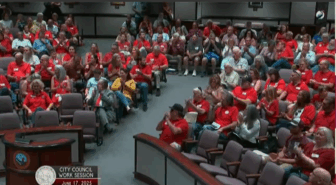MD Wind and Solar Businesses Appeal to Lawmakers and Grassroots to Expand Renewable Portfolio Standard
Leaders say two environmental nonprofits are outliers and calls to end RPS could hurt wind and solar employees
ANNAPOLIS, MD — This week, top leaders in The Maryland wind and solar industries called on state legislators and grassroots activists to embrace a bill that would rapidly expand Maryland’s renewable electricity standard.
The leaders — Andrew Gohn of the American Wind Energy Association and Cyrus Tashakkori of the Maryland Utility-Scale Solar Energy Coalition — pointed to the Renewable Portfolio Standard (RPS) as the key to success for Maryland’s wind and solar industries thus far. They explained that expanding the RPS further would lead to continued expansion of the wind and solar industries, creating thousands of new jobs in Maryland.
Listen to the conference call recording in full here.
There is broad consensus that the RPS incentivizes construction of new wind and solar plants. However, two recent reports from Food & Water Watch (FWW) and Chesapeake Physicians for Social Responsibility (CPSR) have contradicted this broad consensus.
During the conference call, Gohn and Tashakkori explained how these outlier reports used outdated information to come to the wrong conclusions. For instance, the CPSR report continually references data from 2016 to claim that 46 percent of the energy incentivized by the RPS is “brown” energy, or energy from burning black liquor or trash. But in 2020, the RPS will incentivize 80 percent carbon-free energy, with only 20 percent going to “brown” sources. And by doubling the RPS through the Clean Energy Jobs Act, this makeup will be 94 percent clean by 2030.
They also explain why the criticism of “unbundled” Renewable Energy Credits (RECs) is misguided. “There’s a mountain of evidence that RECs incentivize renewables,” Gohn said on the call, pointing to independent analyses from the Brattle Group as well as from national labs like Lawrence Berkeley. “Just about everybody agrees that RPS policies have been the thing that has driven new renewables in the region.” Tashakkori referenced an analogy he also made in a recent Baltimore Sun op-ed:
“RECs help efficiently manage renewable supply and demand across our region in the same way banks enable us to deposit $20 at one branch and withdraw it at another. It’s a different $20 bill, but that’s irrelevant; we still have $20. CPSR’s critique of unbundled RECs is analogous to insisting that the $20 bill we withdrew be identical to the one we deposited across town, a pointless and inefficient system with hugely negative implications for ratepayers.”
Listen to the conference call recording in full here.
The Clean Energy Jobs Act calls for Maryland’s RPS to increase to 50% by 2030, and provides a path for Maryland to achieve a future powered by 100% clean energy. Read more about it here.
CONTACT:
Denise Robbins, Chesapeake Climate Action Network, denise@chesapeakeclimate.org, 608-620-8810
Andrew Gohn, Eastern State Policy Director, American Wind Energy Association, agohn@awea.org, 202-809-7044
Cyrus Tashakkori, Board Member, Mid-Atlantic Renewable Energy Coalition, cyrus@openroadrenewables.com, 512-921-8643
###





